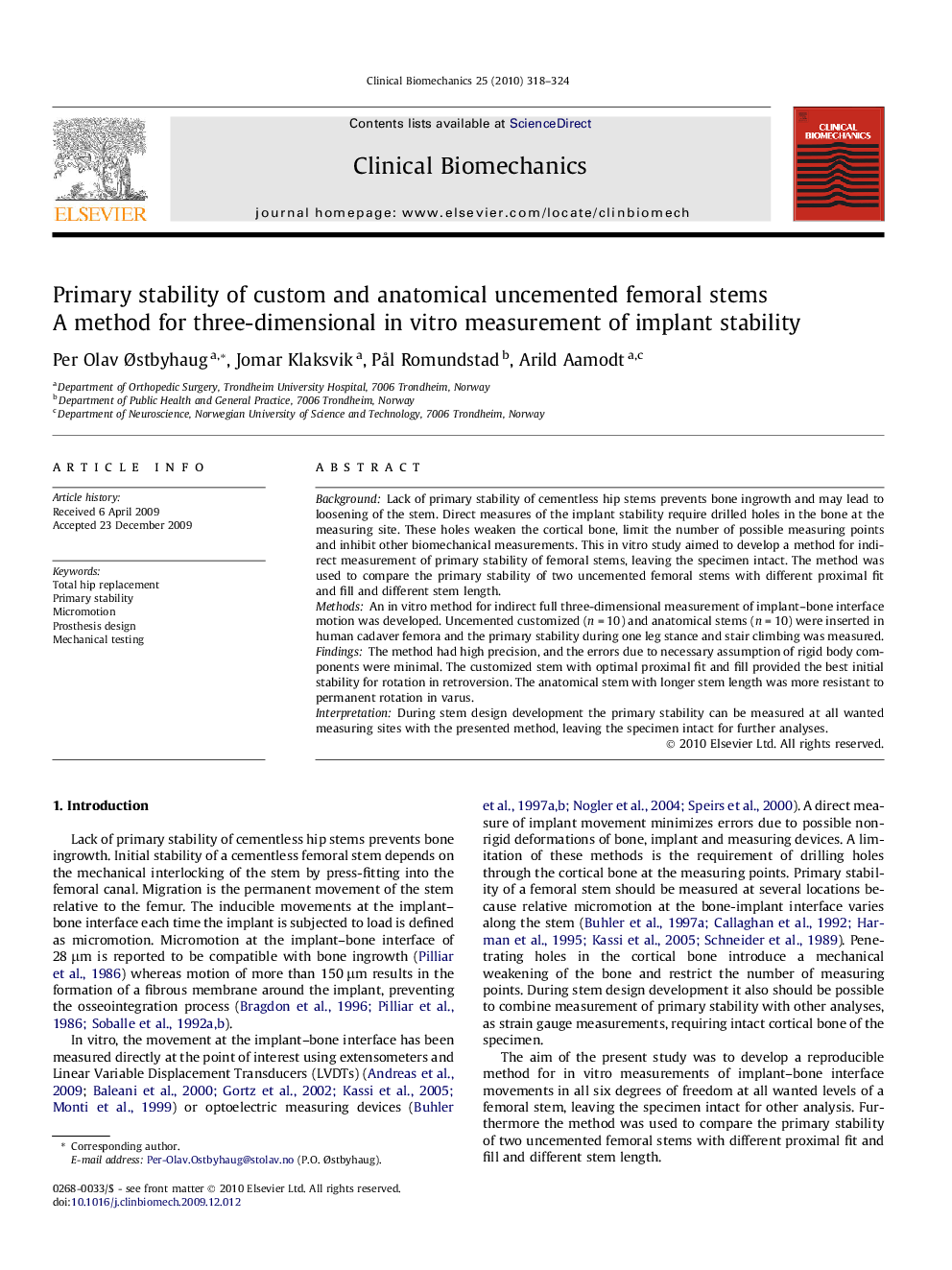| Article ID | Journal | Published Year | Pages | File Type |
|---|---|---|---|---|
| 4050616 | Clinical Biomechanics | 2010 | 7 Pages |
BackgroundLack of primary stability of cementless hip stems prevents bone ingrowth and may lead to loosening of the stem. Direct measures of the implant stability require drilled holes in the bone at the measuring site. These holes weaken the cortical bone, limit the number of possible measuring points and inhibit other biomechanical measurements. This in vitro study aimed to develop a method for indirect measurement of primary stability of femoral stems, leaving the specimen intact. The method was used to compare the primary stability of two uncemented femoral stems with different proximal fit and fill and different stem length.MethodsAn in vitro method for indirect full three-dimensional measurement of implant–bone interface motion was developed. Uncemented customized (n = 10) and anatomical stems (n = 10) were inserted in human cadaver femora and the primary stability during one leg stance and stair climbing was measured.FindingsThe method had high precision, and the errors due to necessary assumption of rigid body components were minimal. The customized stem with optimal proximal fit and fill provided the best initial stability for rotation in retroversion. The anatomical stem with longer stem length was more resistant to permanent rotation in varus.InterpretationDuring stem design development the primary stability can be measured at all wanted measuring sites with the presented method, leaving the specimen intact for further analyses.
